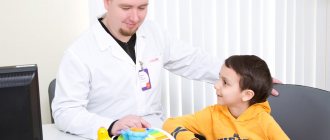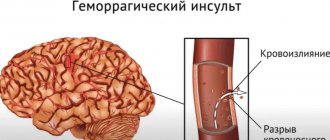You've probably experienced a nervous breakdown at least once in your life. And some - more than once. What to do if you have a nervous breakdown, if it comes again?
Many people think - what kind of nervous breakdowns do you have in the spring?! Well, okay, in the fall and winter, when it’s dark, cold and dreary. However, March is also a difficult month for the psyche. Gray outside the window, slush underfoot, vitamin deficiency, short daylight hours - all this has a bad effect on your mood. Every trifle makes you angry, every little thing makes you angry and offended. How to recognize a nervous breakdown?
Causes and symptoms of a nervous breakdown in women
What are the symptoms of a nervous breakdown?
There is no official diagnosis of a nervous breakdown. This is more of an everyday concept. The symptoms of a nervous breakdown are quite vague. Usually this definition means increased excitability, irritability, touchiness, and psychological stress. There may also be somatic problems, such as headaches.
In Soviet times, such a diagnosis was popular - neurasthenia. It is still listed in the classification of diseases. So, the symptoms of a nervous breakdown are close to the symptoms of neurasthenia - a mental disorder that manifests itself in increased irritability, fatigue, and poor tolerance to prolonged mental and physical stress.
How to recognize a nervous breakdown in women? And is it true that the fairer sex has breakdowns much more often than men?
The symptoms have already been discussed. But neuroses and neurasthenia do occur more often in women due to their physiological characteristics. For example, due to hormonal changes, many women, 10-12 days before the onset of their critical days, suffer from manifestations of premenstrual syndrome, which is characterized by increased excitability and irritability. During menopause, against the background of decreased production of female hormones, nervous breakdowns are also possible: hormonal levels significantly affect the state of the nervous system.
Are the causes of a nervous breakdown just emotional and physical overload? Or something else?
There are several causes of a nervous breakdown. There are objective reasons - intense mental and physical stress, a large amount of work, overwork, lack of sleep and rest... All this can lead to a nervous breakdown. However, not everyone has it - much depends on the individual characteristics of the person. Imagine the situation: your car was cut off on the road. Or they try to cut in line at the checkout. Some people will not react to this, but people with a high level of excitability will instantly lose their temper. Therefore, another cause of a nervous breakdown is the so-called personality disorders.
In addition, many consider a symptom of a nervous breakdown to be something that may actually be a symptom of an illness. Let's say panic disorder. Patients who suffer from it experience panic attacks (panic attacks), accompanied by rapid heartbeat, a feeling of shortness of breath, fear of losing control... People at this moment think: “I had a nervous breakdown,” but in fact it is a panic attack.
This is how children suffering from neuroses feel:
- Alina, 15 years old (social phobia):
“Going to school is torture for me. In class, I feel so tense that my hands are shaking and my neck is going numb. I'm afraid that they'll ask me and the whole class will see that I'm some kind of strange, mentally ill person. I'm afraid that my head will start to shake from tension, that I will lose control of myself. I also blush, sweat, I have to dodge all the time so that no one notices my red, wet hands. I hate myself in such states! When I come home from school, I cry all the time.” - Marina, 14 years old (panic attacks):
“I’m afraid to ride the subway, I’m afraid to sit in class, I’m afraid of situations that are difficult to get out of immediately. My heart starts beating fast, my hands go numb, I’m out of breath. I am afraid that something will happen to me, that I will fall, lose consciousness, and also look strange. I'm afraid of losing control of myself." - Pavel, 14 years old (obsessive-compulsive disorder, OCD):
“I hate my life, I hate doing homework. I'm afraid that I'll miss something important while doing homework or going about my day, so I have to repeat information over and over again in my head until I feel like I've got it all figured out. It takes a lot of time, I get tired of it and annoyed with myself. When I open a textbook, I have to be sure that I haven't wrinkled the page, otherwise I'll have to iron it a few times afterward. Sometimes I don’t notice how I’m tearing out my hair with all this. And that's not it…". - Larisa, 13 years old (social phobia):
“I’m ashamed, and I don’t know what can help me. I am afraid of situations from which there is no quick way out. In class, on public transport, I start to want to go to the toilet, I’m afraid that I won’t be able to stand it, I’ll lose control and everything will happen to me in front of everyone. I'm tense all the time, I sweat from tension, it's uncomfortable for me to walk with circles under my arms. I put napkins there so that they are not noticeable. I sit in class and count down the minutes. The closer you get to the end, the easier it gets. I go to the toilet many times before school to hope that I won't feel like it at school, but it doesn't help. My parents, seeing this, get annoyed with me. I feel abnormal. I can’t tell anyone about this.”
Prerequisites for the emergence of psycho-emotional stress and the formation of neuroses in adolescents in modern society:
- Adolescence is characterized by powerful hormonal changes, which in the psychological sphere manifest themselves in the form of increased anxiety, irritability or a tendency to a sad mood, and in the physical sphere - symptoms of vegetative-vascular dystonia (VSD).
- During adolescence, a set of personal values and goals is formed that are intended to become a support in future life. But, unfortunately, in modern society the formation of personality is forced to occur in conditions of contradiction, duality and inconsistency of the presented value ideology. A humorous example of this: “Of course you should have your own opinion, and now I’ll tell you it!” This leads to internal and external conflicts and, accordingly, to emotional disorders and often to symptoms of VSD.
- Modern society is characterized by a high level of intolerance. There is a large percentage of people with anxiety, irritability, depression due to imbalance, unsettled life or untreated emotional illnesses, which leads to a state of intolerance. Adolescents, accordingly, are easily rewarded by adults with derogatory definitions, which contributes to the emergence of interpersonal conflicts and the formation of vulnerable self-esteem in children. In addition, in such an atmosphere, looking at dissatisfied and anxious adults, teenagers read the underlying information that the world is dangerous. And again the result is emotional disorders and symptoms of VSD.
- Children are spending more and more time on gadgets, walking and socializing less. This, on the one hand, is a prerequisite for VSD (emotions are not realized in sufficient motor activity, an imbalance of the autonomic nervous system occurs), and on the other hand, it leads to insufficient communication practice, as a result of which ordinary communication with peers in real life begins to cause anxiety.
Three common ways of developing neuroses in adolescents against the background of psycho-emotional stress and symptoms of VSD:
- Psycho-emotional stress can manifest itself as symptoms of VSD - muscle tension, trembling in the body, dizziness, a lump in the throat, shortness of breath, sweating, frequent bowel movements, the urge to urinate and other symptoms. If against this background the child begins to fear for his health, then he will develop PANIC ATTACKS or HYPOCHONDRIC NEUROSIS. If a child begins to worry about how he looks, he will develop SOCIOPHOBIA.
- Living in conditions of chronic interpersonal or intrapersonal conflicts, for which adolescents have no solution, can lead to the fact that the psyche will find a way to calm down by performing actions that are understandable to it. This is called displaced activity: in a hopeless situation, a person may begin to perform an action that is understandable to him, but not related to the current situation. This is how obsessions and various rituals are formed, that is, OBSESSIVE-COMPULSIVE DISORDER or OCD.
- Exhaustion of the nervous system against the background of psycho-emotional stress is manifested by symptoms of VSD and irritable weakness, fatigue, headaches, and sleep disturbances. There is increased sensitivity to bright light and loud sounds. This is how NEURASTENIC NEUROSIS is formed.
- Influence the prerequisites for the formation of neurosis. It is important that the hygiene of the child’s life is maintained: that after stress the child has the opportunity to recover, that he sleeps and eats enough, that there is enough physical activity, that the time spent on gadgets is limited. It is important that a child grows up in a peaceful environment, at least in a family. It is important to be consistent in offering and demonstrating good values and to be tolerant. There is no escape, but it will be very helpful for parents to balance their lives and resolve their issues so that they can be happy with their lives. We hope that your child's health can be a worthy motivation to set aside time and other resources for yourself to resolve issues of your own mood.
- Contact a specialist to solve the neurosis that has arisen in the child. Here you can get help in the form of individual consultations, and we have also developed a group program especially for teenagers. This is how they speak about the help received at our center.
- Learn to live an active life correctly.
How to help a teenager?
In addition to neuroses, other disorders of the neurotic level can be observed in adolescence: other emotional disorders and adaptation disorders and decompensation of personal characteristics in the form of various psychopathic behavior.
What to do if a teenager has a nervous breakdown
What are the signs of a nervous breakdown in a teenager? Does this happen to children too?
It happens. And teenage meltdowns should be taken seriously, as they can mask serious illnesses. Parents think that the child is simply tired of studying, and that’s why he is “freaking out,” however, abnormal behavioral reactions may be a symptom of hidden depression or another disease. Many mental disorders (anxiety, bipolar, depressive, personality disorders) debut at 15–20 years of age.
Therefore, if a child has become agitated, irritable, aggressive, or, conversely, complains of constant fatigue and apathy, consult a psychotherapist. You need to figure out whether these are signs of a nervous breakdown in a teenager, youthful maximalism, hormonal changes, or some kind of disease.
What to do if you have a nervous breakdown? Could you give any recommendations?
To begin with, change your lifestyle. Normalize sleep and rest patterns, avoid work or sitting at the computer in the evening (especially if signs of a nervous breakdown are observed in a teenager). Physical activity is encouraged, but not too intense. Preferably in the first half of the day, so as not to excite the nervous system before bedtime.
Now about what not to do during a nervous breakdown. You should definitely not take medications containing phenobarbital. In most European countries such drugs are not produced, but in America they are generally classified as narcotic drugs. In our country, they drink almost liters of them, especially older people. This can lead to an addiction that can be difficult to break.
It is not forbidden to drink soothing herbal infusions. But if you take them constantly and they don't help, consult a psychotherapist. The doctor will select medications that will actually be effective. After all, it’s one thing when a person has a one-time emotional outburst (then you can really drink a sedative drink) and quite another thing if the symptoms of a nervous breakdown bother you for several weeks or months. This will lead to poor tolerance to stress, rapid exhaustion and inevitable conflicts with others.
What is behind aggression?
Aggressiveness
, unfortunately, is inherent in every organism. The ability to behave aggressively is inherited from our ancestors. Once upon a time, many centuries and millennia ago, aggressiveness was a manifestation of protection from destructive external factors, allowing a person to adapt and survive.
In the process of evolution, with the development of a civilized society, the need for aggression for survival has sharply decreased. Therefore, normally aggressive instincts are suppressed and do not manifest themselves. But this is normal. In cases where the nervous system begins to experience stress, the psyche is subject to deformation, painful changes are triggered and aggressiveness can spill out.
Cruelty
- a type of aggressive behavior that manifests itself in the form of a rude and ruthless attitude towards others. Cruelty, according to psychologists, is a consequence of a deficit in the emotional sphere, the sphere of communication and planning one’s behavior and anticipating the consequences of one’s actions.
And if aggressiveness as a broader phenomenon can be a painful symptom, or maybe a temporary reversible reaction of a healthy psyche; then cruelty often turns out to be a sign of some disease of the nervous system and psyche.
TREATMENT OF NEUROSIS IN CHILDREN AND ADOLESCENTS
A psychotherapist specializing in the treatment of neuroses in children and adolescents primarily involves parents to find out the causes of neurosis in their children. Until the cause is eliminated, there is no talk about the effectiveness of treatment. For example, if a child is diagnosed with logoneurosis due to the constant scandals of his parents in his presence, then the first thing that is necessary for his recovery is to rid him of the presence of such scenes.
In the treatment of neuroses in children and adolescents, as a rule, cognitive behavioral and art therapy are used, which make it possible to get rid of anxiety that causes internal nervous tension on a conscious and unconscious level.
In addition, a psychotherapist or psychologist trains parents in behavior that promotes the child’s recovery and the prevention of neuroses.
What causes a nervous breakdown and how to spot it?
Breakdowns most often occur after negative life situations. Anything that undermines your mental strength can lead to shock, but most often these are shocks such as:
- Death of a relative or friend.
- Dismissal.
- Divorce, infidelity, betrayal.
- Problems with your own health or those of loved ones.
- Great financial difficulties, loss of a large sum of money.
- Threat to life.
These are just some of the problems that create a stressful background. If a person does not see a way out or is isolated and cannot ask for help, a breakdown occurs.
In addition to personal problems, external reasons cannot be ruled out:
- Economic and political crises.
This directly affects your income, mood, freedom and the happiness of those around you. And it can become an impetus for constant worries. - Coronavirus.
In addition to increasing mortality, the disease brings more and more new consequences for the health of mankind, including psychological ones. The amount of anxiety and stress increases.
The reason varies from person to person. Very often there are situations where one event overlaps with another or a long stressful history, for example, caring for a sick relative.
However, if you notice that you are constantly stressed or have other symptoms every day, then you should start solving the problem.
Diagnosis of neurosis
First of all, the baby is examined by a pediatrician to rule out diseases of the internal organs.
Next, the neurologist continues the diagnostic search, excluding damage to the nervous system. A neurologist may prescribe additional instrumental examination methods: EEG, ultrasound of head and neck vessels, MRI, somnography (sleep phase study). When organic causes are excluded, the child’s personality traits are examined by a medical psychologist during a pathopsychological examination. Intelligence, thinking, will, emotions are explored. The psychological conclusion reflects the structure of the personality - temperament, character, skills, abilities, features of the course of mental processes.
Key symptoms of the crisis: 7 major changes
To one degree or another, the manifestations have similar features in all children; only the severity of the key characteristics of the 3-year-old crisis differs. Parents describe common manifestations as changes in behavior and disobedience, scandals and hysterics, tears literally over every little thing. Psychologists identify 7 main symptoms of crisis behavior:
- Negativism . The child flatly refuses to follow the instructions of adults, even if this request is beneficial to the child himself. To any requests - a clear “no”.
- Obstinacy . The baby suddenly changes his habits and does not want to adhere to the regime. Through scandals and hysterics, he tries to win the right to do as he wants.
- Stubbornness . The child makes a decision and strictly adheres to this line. It is impossible to force, persuade or motivate him to do certain habitual actions. He will cry, but clearly stand his ground.
- Self-will . The baby wants to do things on his own, ignoring the parents' prompts or words.
- Protest . The peculiarities of this characteristic are a storm of emotions in relation to his parents’ instructions about what he should do. If parents have chosen or decided something for him, the child refuses these things or actions.
- Depreciation . The baby stops appreciating those things or actions that were previously important, loved or dear to him. He may throw and break his favorite toys, call his parents names, fight with his brothers and sisters, and refuse his favorite treats.
- Despotism . The child tries to command family members, demands submission and unquestioning obedience. If his whims are not fulfilled, hysterics and screams follow, stamping his feet and raising his voice. Source: D.M. Shakirova, A.F. Gilmanova. Age crises in children of preschool and school age // Skif. Student Science Questions, 2021.
Not all of these signs may manifest themselves equally clearly; sometimes certain symptoms predominate, which are triggered most often and which the child uses as an instrument of influence.
How to help a teenager
The main burden of providing assistance in such situations falls on parents or loved ones.
First of all, it is necessary to understand the causes of such behavioral disorders. If there are family problems (conflicts, overprotection or hypoprotection, mental disorders among family members), then you need to work on “improving” the atmosphere within the family. Spending time together, family psychotherapy, advice from a psychologist, etc. will help here.
If there are no visible and explainable reasons, then you should consult a psychiatrist to rule out diseases that require treatment. If a teenager refuses to go to see a doctor, it makes sense to go to see a doctor without him.
Decreased academic performance
The fact that a child is in a poor psycho-emotional state is indicated by such signs as impaired memory functions, difficulties with imagination, poor concentration, loss of interest in everything that previously aroused curiosity.
What to do? Take an interest in the children’s school affairs every day. “What are the grades?”, ask about his feelings, mood, support him. Do not skimp on praise, notice even the most insignificant achievements of the child. If possible, help your child complete difficult tasks.
8. Fatigue
, difficulties with studying, which used to be easy. The child gets tired quickly after exercise, is absent-minded, forgetful, and restless.
What to do? Find out about childhood experiences and emotions. To help your child feel supported, make sure he knows that you are available any time he wants to talk to you about his problems. Appreciate your child in all situations and hug as often as possible.
Health problems
Parents are often confused by inexplicable symptoms: vomiting, rash, fever, abdominal pain and other oddities - all this can happen due to nervousness if the child is very worried.
What to do? First, establish the psychological climate in the family, check whether the demands of family and school are not too different. They must be clear and consistent. Ideally, you should work with a child psychologist on the child’s self-esteem and be sure to check whether your son or daughter has personal time and space.
What happens to the psyche during adolescence
During the period from an average of 10 to 18 years, the development of internal organs and systems acquires qualitative changes, hormonal changes begin, new social instincts begin to appear, and sexual behavior is formed. All this is reflected in the mental sphere. Almost all mental functions change.
Attention to things that were previously uninteresting increases. The load on the emotional and volitional sphere increases, which makes it increasingly difficult to restrain and adapt. Thinking and personal characteristics change. This contributes to such adolescent behavior characteristics as:
- protest reactions,
- attracting attention to oneself,
- realization of energy unspent in a normal way,
- intolerance.











